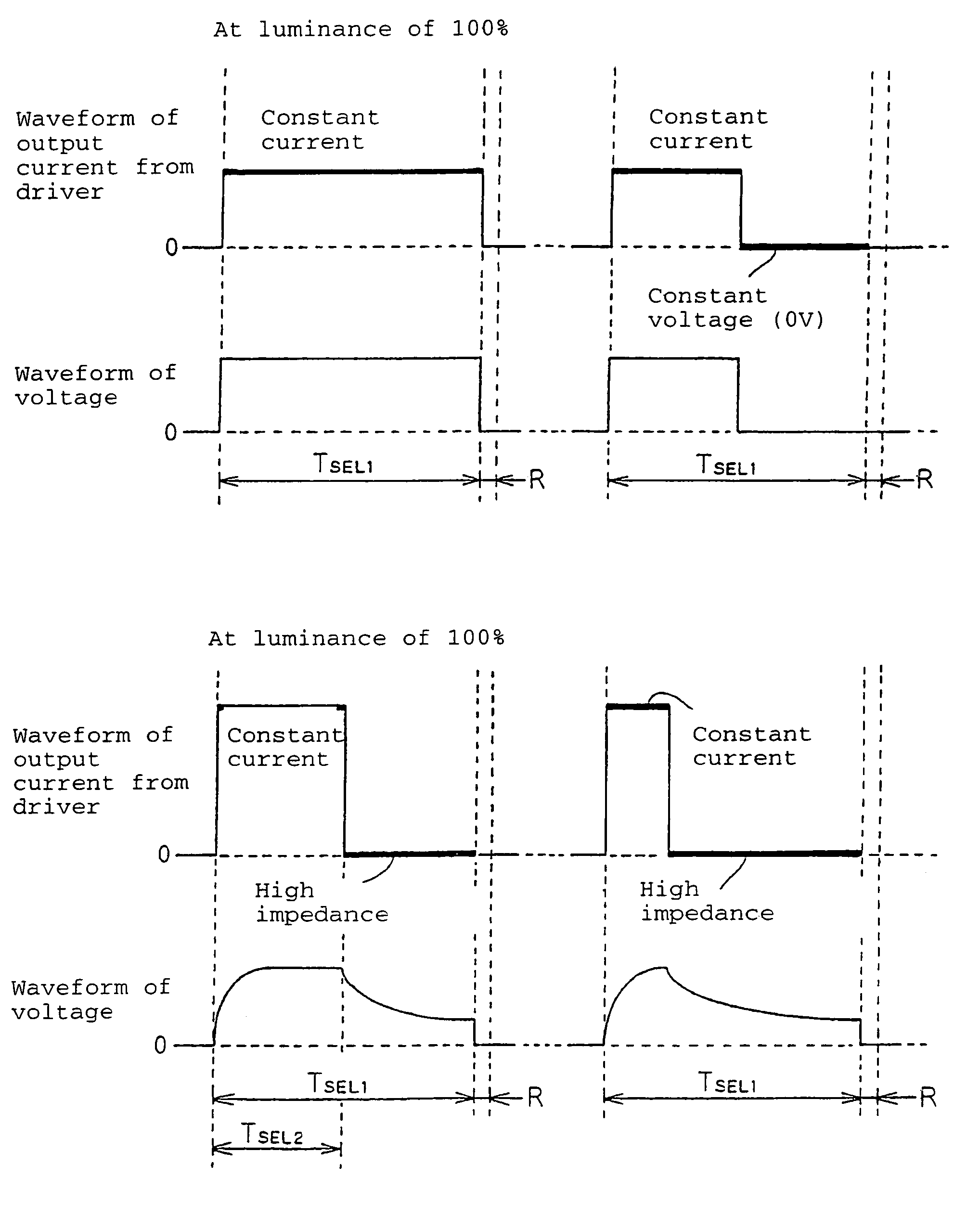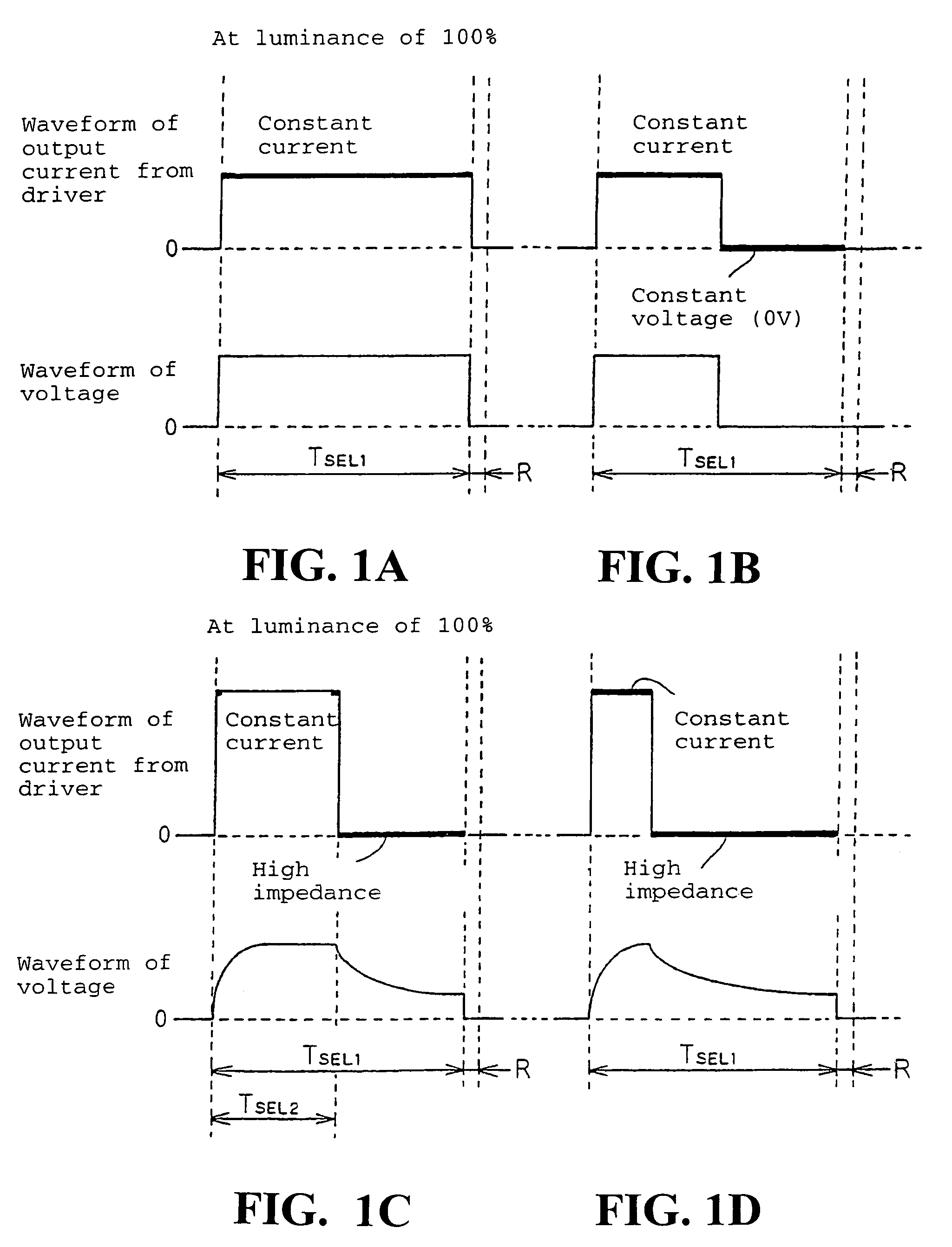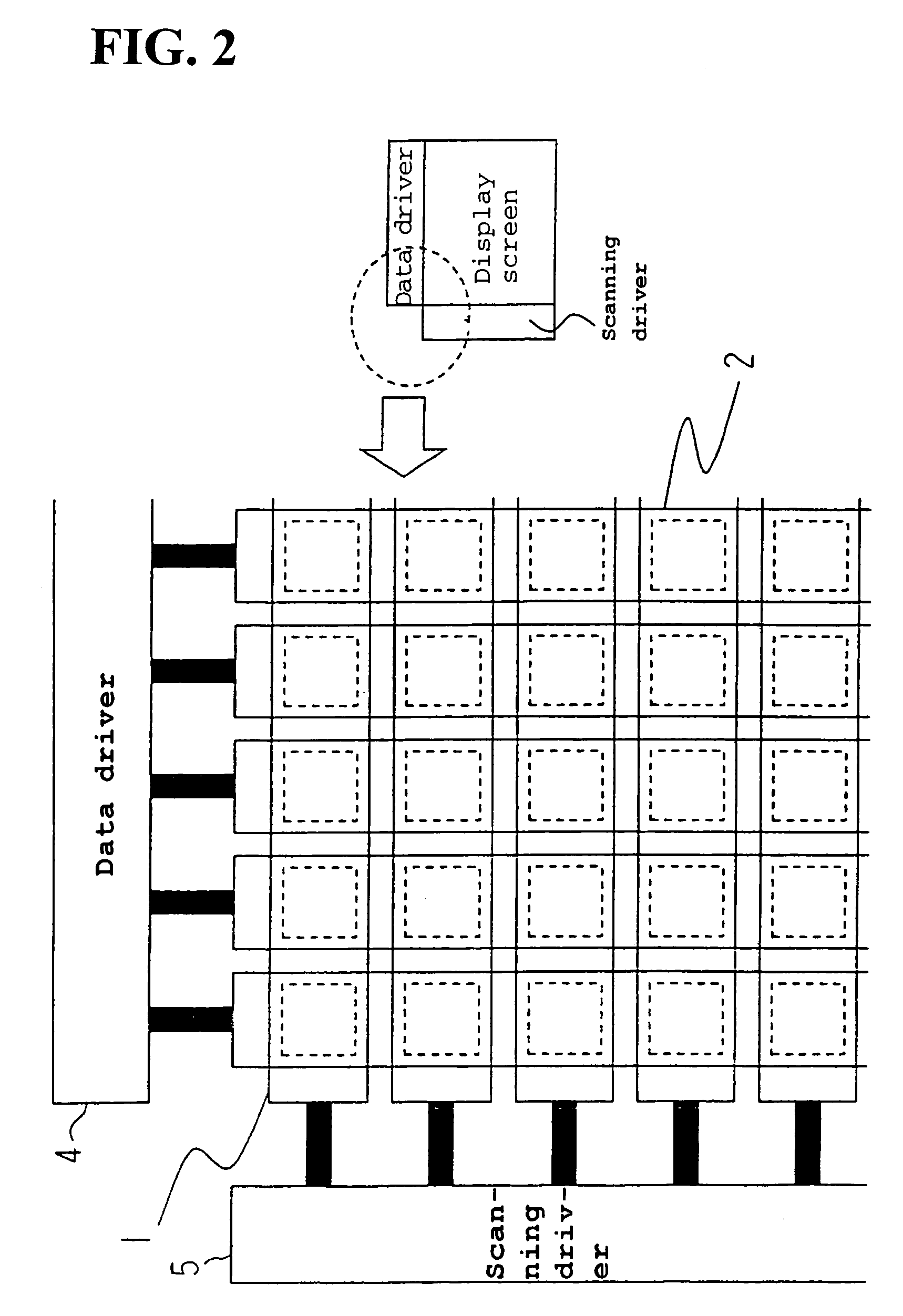Method for driving an organic electroluminescent display device
- Summary
- Abstract
- Description
- Claims
- Application Information
AI Technical Summary
Benefits of technology
Problems solved by technology
Method used
Image
Examples
example 1
[0127]Organic electroluminescent panels for passive matrix addressing were provided on respective glass substrates. Each of the panels was fabricated as follows. An ITO film was deposited on the glass substrate so as to have a film thickness of 200 nm, and the deposited film was etched to form anode strips 2. A film of chrome (Cr) and a film of aluminum (Al) were deposited so as to have a layered structure having a film thickness of 300 nm, and the deposited layered structure was etched to form circuitous wiring in the organic electroluminescent panel. On the etched structure, photosensitive polyimide was applied as an insulating film, and the applied film was exposed and developed to form openings working as light emitting portions of respective pixels. On the structure thus layered, a thin film was deposited to form a hole injection layer having a film thickness of 30 nm as an organic electroluminescent layer by a wet application method using an organic solvent containing PTPDEK a...
example 2
[0139]Among the organic electroluminescent panels used in Example 1, organic electroluminescent panels, which had a slightly unequal distribution in the driving voltage, were selected and used. In the normal time (at a high luminance), the selected panel was driven by the reset driving method under the same conditions as Comparative Example 1 as shown in Table 3. In the dimming time, the panels were driven with the driving current being lowered to 0.1 mA in the temperature range of from −40° C. to 90° C. by the electric charge driving method.
[0140]In both cases, no chrominance non-uniformity was visually recognized. The supply voltage of the drive circuit did not exceed 22 V. In other words, it was verified that the second typical example was able to offer the advantages stated earlier.
[0141]
TABLE 3Example 2Driving stateNormal timeDimming timeDriving methodReset drivingElectric chargemethodcontrol drivingmethodGray scale methodPWMPWMDriving current0.30.1(mA / pixel)Supply voltage12 V ...
example 3
[0148]In organic electroluminescent panels used in Example 1 were used again and driven by the electric charge control method in an ambient temperature range of from 0° C. to 90° C. as in Example 1 as shown in Table 6. In an ambient temperature range of from −40° C. to −1° C., the reset driving method was performed in the normal time (at the high luminance) under the same conditions as Comparative Example 1, and the electric charge control driving method was performed in the dimming time with the driving current being lowered to 0.1 mA.
[0149]The panels were driven as stated just above. In the range of from 0° C. to 90° C., no chrominance non-uniformity was visually recognized, and no cross-talk was caused as in Example 1. In the range of from −40° C. to 0° C., cross-talk was visually recognized in the normal time. When an organic electroluminescent panel having an uneven distribution in the driving voltage (non-uniformity in the driving voltage) was used, chrominance non-uniformity ...
PUM
 Login to View More
Login to View More Abstract
Description
Claims
Application Information
 Login to View More
Login to View More - R&D
- Intellectual Property
- Life Sciences
- Materials
- Tech Scout
- Unparalleled Data Quality
- Higher Quality Content
- 60% Fewer Hallucinations
Browse by: Latest US Patents, China's latest patents, Technical Efficacy Thesaurus, Application Domain, Technology Topic, Popular Technical Reports.
© 2025 PatSnap. All rights reserved.Legal|Privacy policy|Modern Slavery Act Transparency Statement|Sitemap|About US| Contact US: help@patsnap.com



